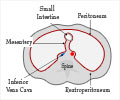The mortality rate from pulmonary fibrosis in African-Americans is almost twice as high as that found in the Caucasians. For many years now, researchers have been searching for an explanation for this difference. Now physiologist from Belarus says that she has found why this racial difference exists.
"Pulmonary fibrosis is a deadly, very complex disease where the lung's air sacs are replaced by tough fibrotic tissue," Galina Bogatkevich said. Using modern physiological technology called proteomics, Bogatkevich's laboratory compared healthy and diseased lung fluid and found that a key growth factor that is supposed to inhibit fibrotic growth is malfunctioning. "This is the first time we've identified a physiological difference that parallels the profound differences between black and whites in the severity of the disease and prognosis," she said in an American Physiological Society session at Experimental Biology in San Francisco. Pulmonary fibrosis (PF) strikes nine of out 10 patients with systemic sclerosis or scleroderma, a group of diseases involving abnormal growth of the connective tissue that supports the skin and internal organs. Current thinking is that pulmonary fibrosis is caused by micro injury to the lung as part of the earlier diseases' progress. "But we also know that PF is a 'proteomic disease' – that is its pathogenesis depends on the imbalance in expression and communication between many proteins," Bogatkevich noted. Using the proteomic approach they found that the amount of antifibrotic glycoprotein hypatocyte growth factor (HGF) was reduced in the blood and epithelial lining fluid of African-American scleroderma patients than in Caucasians. And the latest study presented in San Francisco "demonstrates that antifibrotic effects of HGF are impaired in lung fibroblasts isolated from Africa-Americans may be due to the deficiency in c-Met receptor function," Bogatkevich said. "This may explain, in part, the greater severity and worse prognosis for African-American scleroderma patients." Until now the only therapy for this very difficult group of diseases was palliative: oxygen to increase the chance of breathing success and/or trying to generally boost the immune system. Neither approach is real therapy, However, "now that we've identified the c-Met malfunction, it gives us a good direction to follow," Bogatkevich said. "It's a promising target that seems to take the same clear track as the disease's population." First step is "we need to find or develop a suitable animal model where PF can be imposed. Also we plan to do polymorphism studies because probably there are some Whites that have differences in the c-Met function due to damage or signaling difficulties and the results could give us some useful clues." She said it's also possible "now that we know what to study, that further work on scleroderma itself will be more productive. It's a little simpler disease, and since PF develops from these diseases in the first place, going upstream in the pathogenesis could yield even more useful results. These future studies on the c-Met receptor functionality definitely will advance out understanding of this range of diseases," Bogatkevich concluded. *Paper presentation: "Antifibrotic effect of hepatocyte growth factor is impaired in lung fibroblasts isolated from African-Americans," APS Physiology Airway Mechanics and Mechanotransduction in the Lung 767.9/board #C684. Research was by Galina Stephanie Bogatkevich, Anna Ludwicka-Bradley, D. Beth Singleton and Richard M. Silver, Department of Medicine, Medical University of South Carolina, Charleston. Contact: Mayer Resnick [email protected] 301-332-4402 301-634-7209 (office, outside EB dates), or Christine Guilfoy 978-290-2400 APS Newsroom April 1- 5 #112 Moscone Center North 415-905-1024 Source: EurekalertMalfunction Of Key Growth Factor Increases Mortality Rate From Pulmonary Fibrosis In Blacks
Recommended Readings
Advertisement









